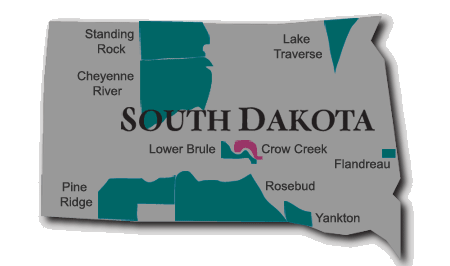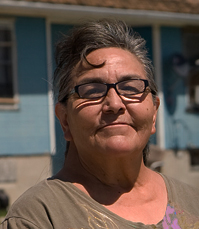|
|

 |
About the Wiciyela Sioux: The Siouan language family, including Lakota-Dakota-Nakota speakers, inhabited over 100 million acres in the upper Mississippi Region in the 16th and early 17th centuries. Conflicts with the Cree and Anishabe Indians, as well as the lure of the Great Plains’ buffalo herds, impelled the Sioux to move further west in the mid-17th century. The Lakota acquired horses around 1740. Shortly thereafter, the Tribe crossed the Missouri River, arriving in the Black Hills in 1775. The Lakota were the archetypical Plains Indian, living in organized bands, warring and raiding, and relying on buffalo for food and clothing.
History of the Reservation: The terms of the Fort Laramie Treaty of 1868 placed the Lakota on one large reservation that spanned parts of North Dakota, South Dakota, and four other states. After the defeat of the Indian tribes in the Indian Wars of the 1870s, the United States broke the Lakota’s original reservation into smaller ones. Not only did the U.S. government reduce the Indians’ acreage, but it also splintered the Tribe. In 1889 the United States reclaimed 7.7 million acres of the Sioux’s sacred Black Hills and randomly assigned Sioux families to live on the Crow Creek Reservation, splitting up many extended families.
Life on the Reservation: The tribal and federal governments provide the majority of jobs available on Crow Creek. Although the Tribe also operates a small casino that provides a few job opportunities for tribal members, more than 2 Wiciyela in 3 are jobless.
In addition to a severe lack of employment opportunities, Crow Creek also lacks access to basic services and resources. The Reservation has neither a health care facility nor a grocery store. Without access to transportation, many people must rely on a poor diet of prepackaged food from a local gas station. This in part worsens health problems such as diabetes on the Reservation. How can I help?
Crow Creek on the map: Buffalo, Hyde, and Hughes counties, South Dakota, on the eastern shore of the Missouri River.
Tribal enrollment: 3,521 enrolled tribal members, 1,230 residents.

|
|
|















